Now that you’ve had a summer full of harvesting, it’s time to learn how to grow and harvest fresh oregano indoors in the middle of winter!
Just because fall has arrived and the weather is starting to cool off doesn’t mean you have to be done enjoying freshly picked herbs like oregano, thyme, or rosemary. Thankfully, there are a few ways you can extend your growing season to give you year-round oregano harvests.
Oregano is a perennial herb. That means it will continue to grow and produce more than just one season’s worth. Unlike tomato plants that need to be pulled after a successful summer of producing fruit, oregano doesn’t necessarily have to be removed.
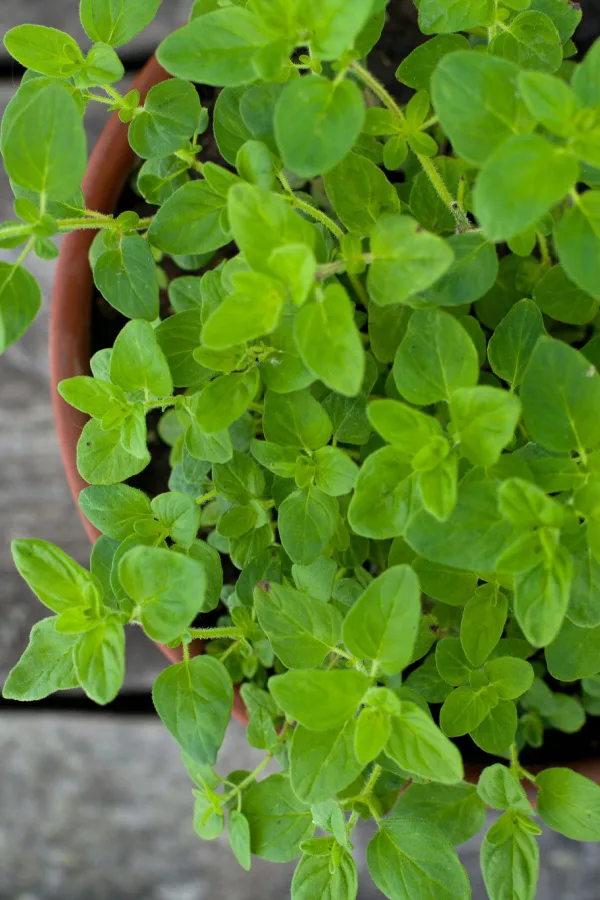
One way to extend growing is to overwinter the oregano without harvesting. This allows you to keep the oregano in-ground year-round. Once spring arrives, your oregano will start growing again.
However, there are other options available when you want to use freshly picked oregano at any point of the year – no matter the season. Which option(s) you choose will ultimately depend on your climate and growing condition.
Overwintering Without Harvesting
If you want to overwinter your oregano instead of being able to continue harvesting it, then you can take a few simple steps to protect this perennial in the fall. This option is for those who only want to enjoy it during the spring and summer months.
As soon as you receive your first couple of hard freezes, you need to cut back the oregano so that it is around 3 to 4 inches above the ground. Next, add a few inches of organic mulch like shredded leaves, straw, or bark on top.
The mulch will help to protect the oregano from constant freezing and thawing that can occur during the cold winter months for some locations. The oregano might still produce new growth, but it will be much slower. When the weather starts to warm up in the spring, the mulch can be removed. The oregano will start to grow, allowing you to harvest once again.
However, since the main goal for many people is the continual harvesting of fresh oregano to use in cooking all year long, let’s take a look at how to accomplish that now.
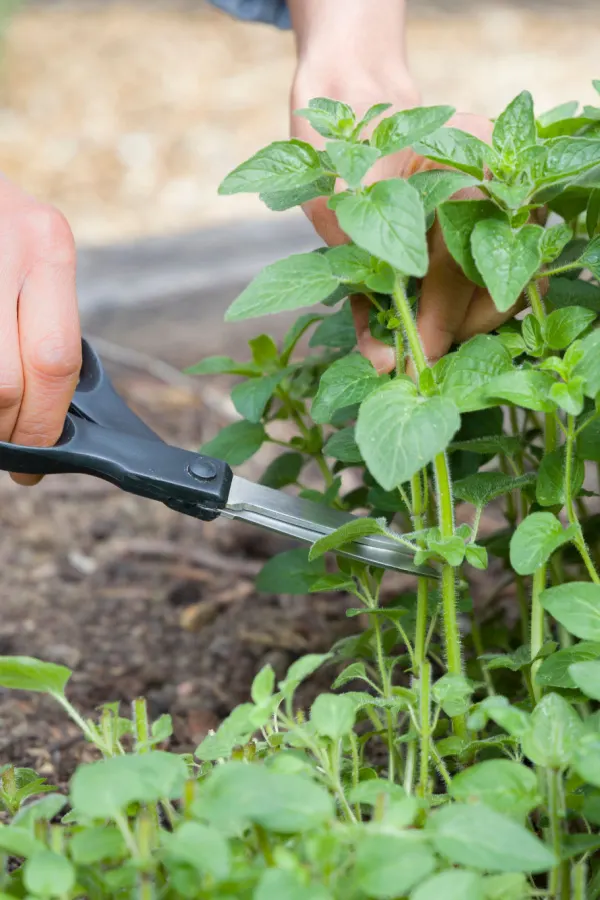
Growing Fresh Oregano In The Winter
Whether you are using it to season up a chicken breast or for a delicious Greek salad, having fresh oregano on hand is a must for many people in the kitchen.
How you harvest oregano in the winter however will depend on your location and climate. It grows best in daytime temperatures of around 60 to 80º Fahrenheit (16 to 27º Celsius).
In addition, oregano is hardy in USDA Growing Zones 5 through 12. The warmer Southern growing zones can get by with leaving oregano in-ground year-round. However, the Northern locations will need additional help.
Adding Cold Frames, Cloches, or Row Covers – Growing Fresh Oregano In The Winter
Cold frames, cloches, and row covers will work well for locations where the fall weather starts to drop yet extremely low temperatures have not arrived. They also work well for locations that only have milder winters. Many gardeners are able to extend growing for quite a while, if not all winter long.
Cold Frames
Cold frames are four-sided structures with clear tops (like old window panes). The frames typically sit on the ground around the plants they are protecting. They do a good job of keeping the colder temperatures and elements out while helping retain heat.
Since the top of a cold frame is usually clear, the warm rays of sunlight can still seep into the structure. This helps to heat the air inside as well as the soil inside the frame. Adding straw or another mulch around the oregano plants can also help to prevent the soil from freezing for as long as possible as well as help retain heat.
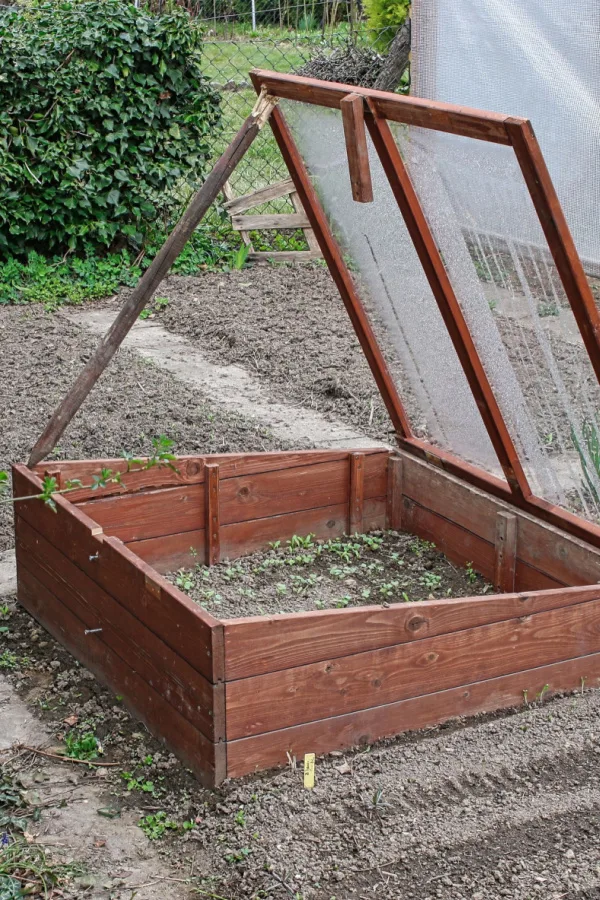
Cloches
Cloches are basically smaller, portable cold frames. They are usually placed around smaller individual plants. You can create inexpensive cloches to protect small oregano plants. Simply cut the bottom off of a one-gallon milk jug and place it over an individual plant. While cloches will help protect plants from the occasional light frost, they will only help a small amount.
Row Covers
Row covers are usually fabric that is placed over crops to help prevent frost damage. While lightweight fabric helps to prevent pests and bugs that can arrive in the spring, you can use heavier fabric to help with colder temperatures and elements in the fall.
They can typically help keep temperatures around 4 to 6 degrees warmer on a temporary basis. Because they are not clear, they don’t allow sunlight to reach plants. However, row covers might be all you need for locations that only receive occasional frosts or below-freezing temperatures here and there.
Bringing Plants Indoors – Growing Fresh Oregano In The Winter
In colder regions and where temperatures have dropped past the point of cold frames, cloches, and row covers, you can bring your oregano plants indoors during the winter. It’s easy, simple, and a great way to continue gardening even with snow on the ground outside.
Containers
If your oregano was grown in containers during the summer months, then it’s relatively easy to move them indoors during the fall and winter months. Start before the weather drops too low and move the containers indoors.
Choose a warm location that receives bright, indirect sunlight and you’ll be able to keep harvesting all winter long. Oregano plants also grow well under regular fluorescent lights. This is a great alternative if a sunny windowsill isn’t available within your home.
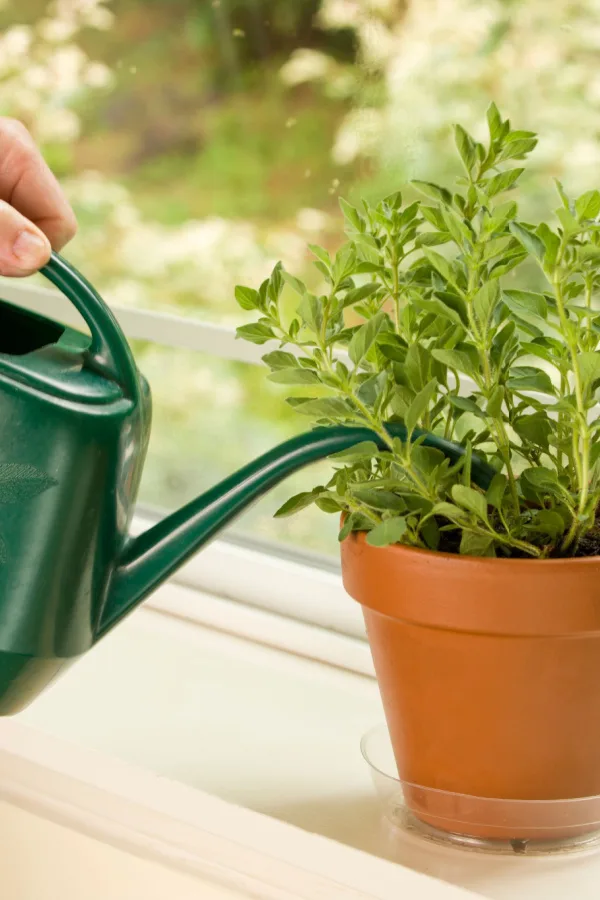
Allow the soil to dry out between waterings. Since oregano is drought-resistant, it does better with underwatering as opposed to overwatering. You may need to elevate the humidity levels within your home, however, since homes typically have dryer air during the winter months.
Transplanting In-Ground Oregano
If your summer oregano was grown directly in the ground, then you can do one of two things. You can either dig up the entire plant and pot them in containers or you can take cuttings. (Be sure to mulch the plants you leave outdoors so you can enjoy them again in the spring!)
If you plan to dig up plants, do it before the temperatures drop too low to help the plants acclimate to growing in containers before you actually need to bring them indoors. This will help to reduce shock on the newly potted plants.
Be sure to dig up the entire plant – roots and all. Use a well-draining, all-purpose potting soil mix and ensure that your container has sufficient drainage holes. (Clay pots are excellent for growing herbs both inside and outside.) Keep the newly potted plant outside for about a week before moving them inside.
For cuttings, take a stem that is about 3 to 5 inches long. Cut at a diagonal, right above a node. Remove any of the lower leaves and place the cutting in a small container of potting soil. You can also place them in a jar of water for rooting. Keep cuttings in a warm location with access to bright, indirect sunlight. Once roots have started to grow, you can treat them as you would normal container plants.
Starting New Plants – Growing Fresh Oregano In The Winter
Lastly, you can start brand-new container oregano plants easily and quickly with seeds. Simply scatter a few seeds on top of a 4 to 6-inch clay pot or another small container filled with a pre-moistened seed starting mix. You do not need to cover the seeds with soil. Keep the container in a warm location and keep the soil lightly moistened. The seeds should germinate in around 10 to 15 days.
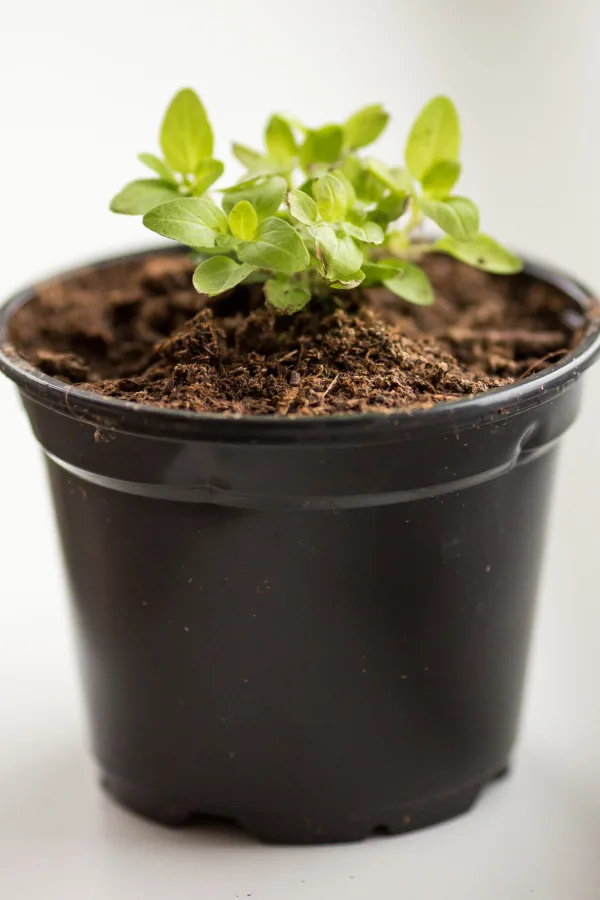
Once they start to germinate, move the container to a sunny window but be sure to keep them out of direct sunlight. You can also use supplemental lights if you don’t have a sunny windowsill available.
After the seedlings are a few inches tall, thin them so there is sufficient spacing between plants. Allow the soil to dry between waterings and you should be able to harvest from these new plants in about 6 to 8 weeks.
Along with oregano, be sure to check out these other great herbs to grow indoors. All of these herbs are easy to grow indoors and really help to elevate your culinary dishes – even during the cold winter months!
Follow Our Facebook Page For Even More Great Tips! Simple Garden Life Facebook Page
Simple Garden Life is a website dedicated to keeping gardening fun, simple and enjoyable! We publish two new articles each week along with a new garden podcast episode every two weeks. This article may contain affiliate links.
